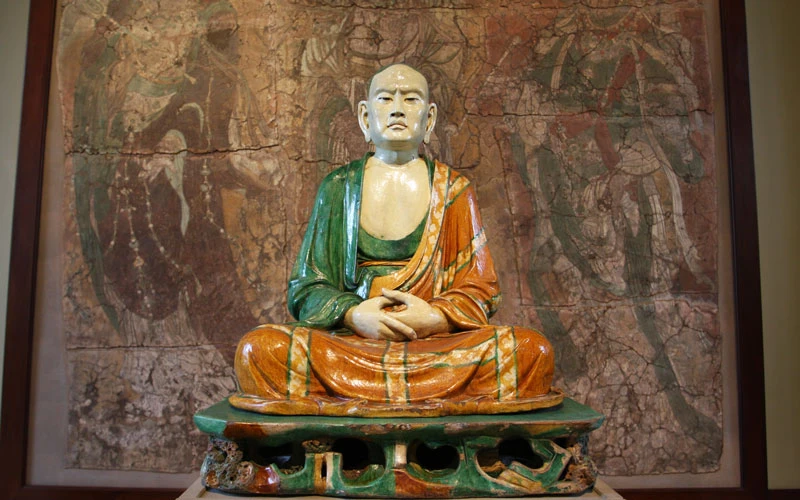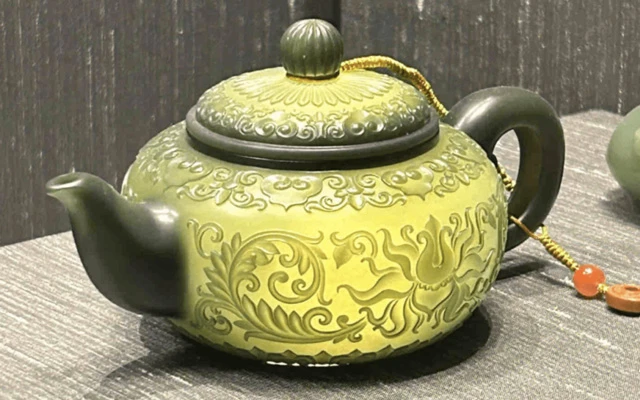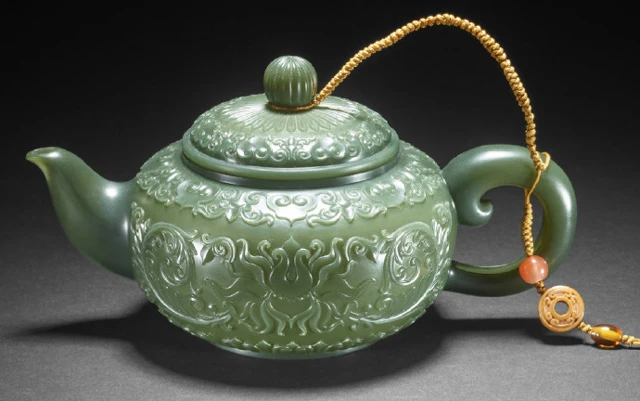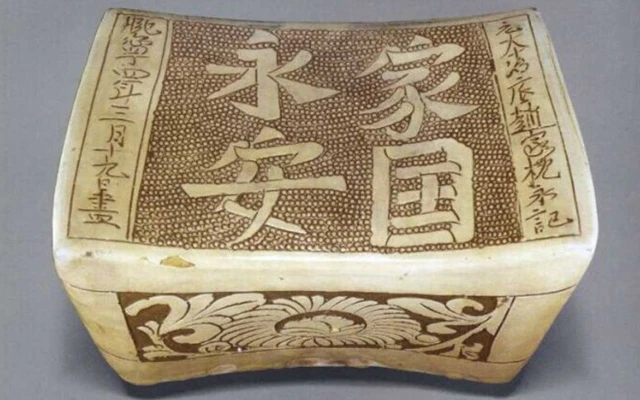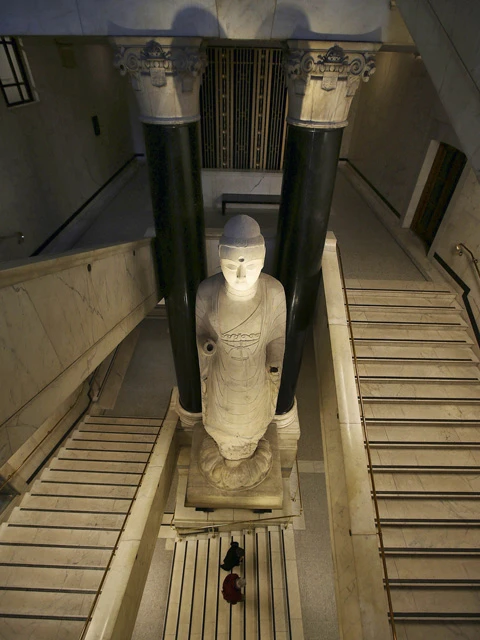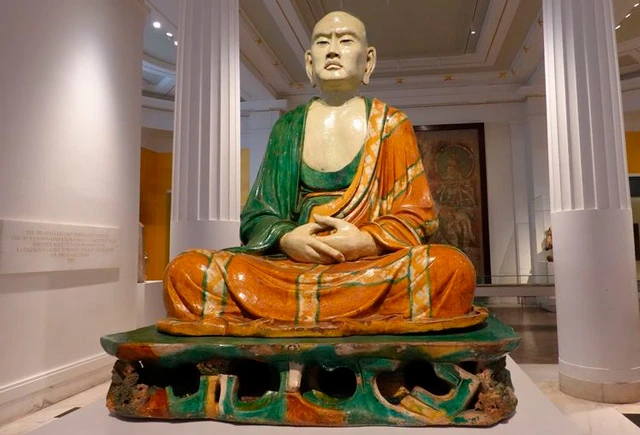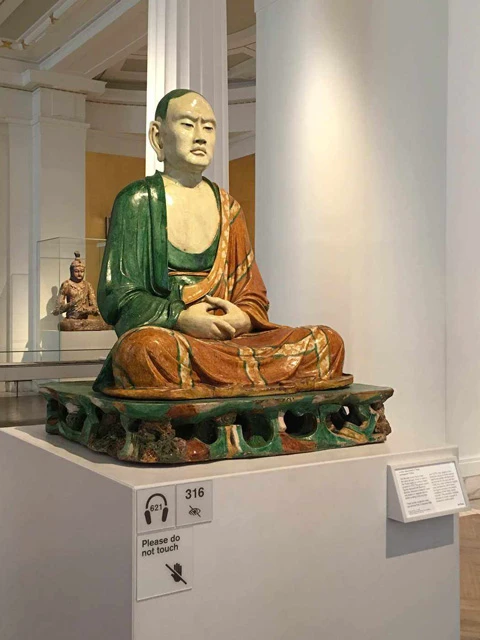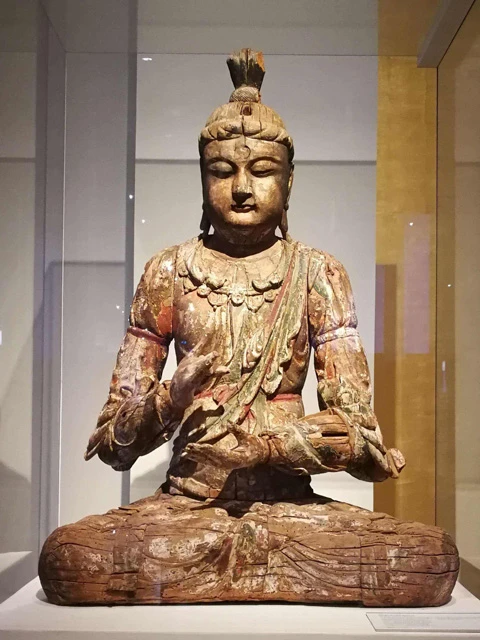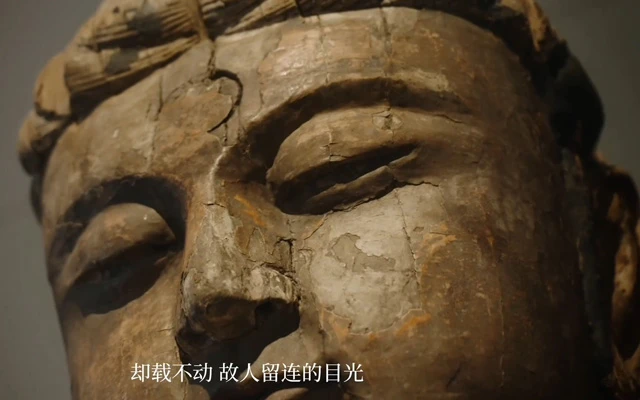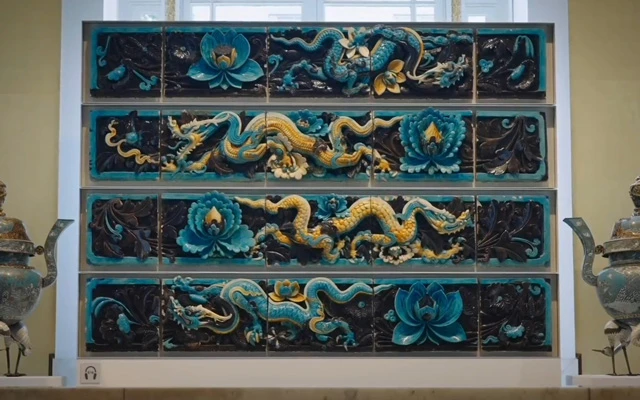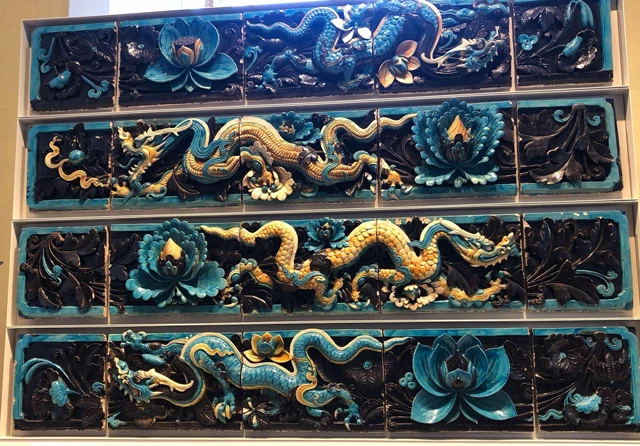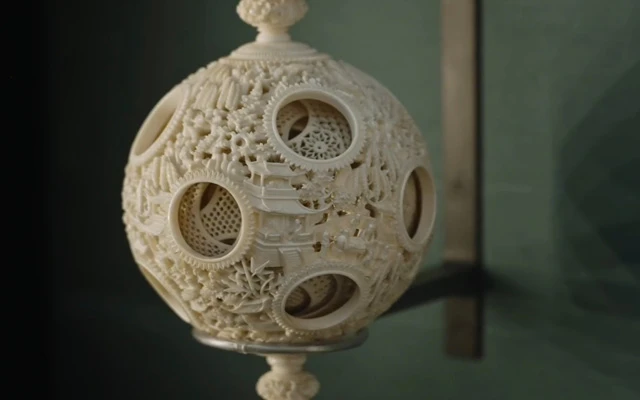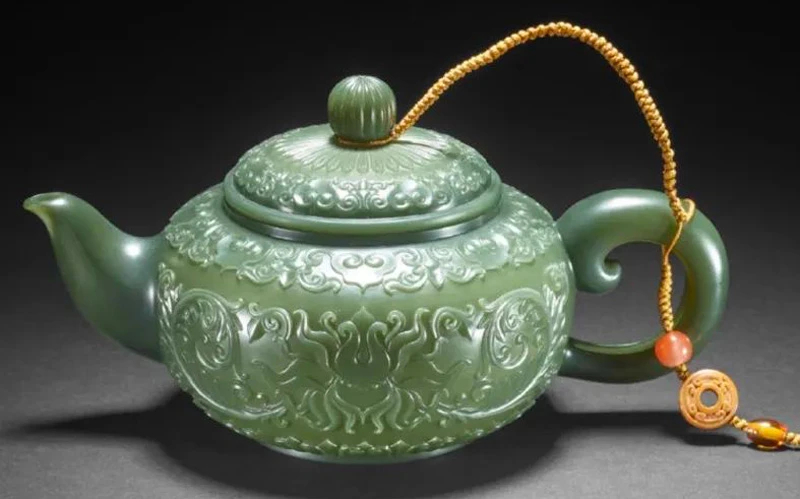The short drama "Escape from the British Museum" has become popular. This three-episode short video series, co-created by online media personalities Jianbing Guozai and Xiatian Meimei, is the most anticipated work in the film and television industry recently. It not only generated a lot of buzz on major online platforms but also received recognition and encouragement from numerous media outlets.
Using personification as a narrative technique, it tells a sophisticated story: a delicate Chinese jade pot escapes from the British Museum and encounters a Chinese journalist named Zhang Yong'an, who is working overseas. They then embark on a journey back home together, fulfilling the task entrusted to her by the Chinese artifacts in the British Museum.
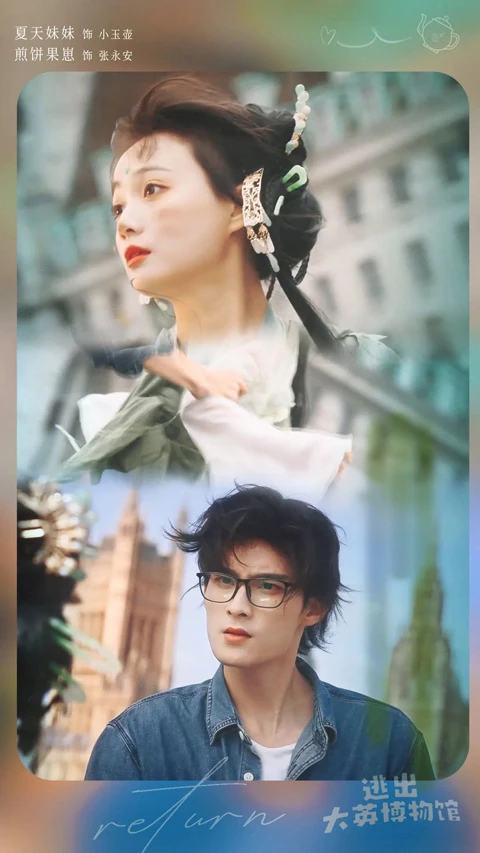
With a total duration of less than 20 minutes, despite the insufficient maturity of its production elements such as scenes and props, the storytelling logic is complete, the emotions are abundant and solid, and the conveyed values are positioned at a very high level. It serves as a low-cost, high-level Chinese short drama model.
After the release of the final episode, it directly sparked an explosive wave of praise. Many netizens were deeply moved by the scene where overseas cultural relics read letters to their brothers and sisters in China, and they felt proud because of the national character and dignity displayed by the small jade pot.
According to official media and netizens' feedback, "Escape from the British Museum" undoubtedly provides a revelation to current short drama creators: "emotions + sincerity" are more important than investing in extravagant production elements. Do not underestimate everyone's aesthetic sense and taste, and do not underestimate the internet users' tolerance and empathy, as long as they genuinely identify with, respect, and love the content itself.
As a concrete expression of cultural content, the design of the two main characters and the selection of the showcased cultural relics have been carefully considered. Now, let us explore the past and present of eight cultural relics, and appreciate the creators' dedication from the perspective of real historical and cultural dimensions. These eight cultural relics represent eight different crafts and materials, representing a corner of China's splendid culture.
01 Chinese Twining Branches Jade Pot (Contemporary)
The jade pot, incarnated as the female protagonist, is a Chinese twining branches jade pot. It is not a relic looted from China during times of war, but a modern craftwork created by the master jade carver Yu Ting from Suzhou. It won the Excellence Award of the 2007 Beijing Craftsmanship Award and was included in the modern and contemporary collection of the British Museum in 2017. As a contemporary craftwork, this jade pot represents the cultural exchange between modern China and overseas, as well as the inheritance of jade carving craftsmanship in China. It is grand and yet embodies the modern national trend.
The tea pot has a diameter of 9 centimeters, a length of 14.3 centimeters, and a height of 8 centimeters. Its shape is smooth, gentle, and graceful, with an artistic deformation in the style of freehand brushwork. The flower design resembles both lotus and Buddha's hand, exuding auspiciousness and tranquility. The pot lid is adorned with lotus leaf patterns and other floral patterns. The entire work is dignified, stable, and imbued with vitality. The thin walls are translucent, revealing the exquisite carving craftsmanship.
Jade carving is one of the oldest forms of carving in China, with a history of over 5,000 years. As early as the Hemudu culture period, China had produced jade ornaments such as jade rings and jade beads, making it the oldest jade culture in human history. Chinese jade carvings enjoy a high reputation worldwide, and in 2008, jade carving was included in the second batch of Chinese intangible cultural heritage list. The emergence of the Chinese twining branches jade pot proves that this ancient craft still shines brightly.
02 The Porcelain Pillow "Jia Guo Yong An" (Northern Song Dynasty)
The protagonist's name, Zhang Yong'an, originates from the inscription on the porcelain pillow from the Cizhou Kiln of the Northern Song Dynasty, which reads "Jia Guo Yong An." The surface of the pillow is delicately engraved with the four characters "Jia Guo Yong An (家国永安, long-lasting peace and stability of the country and the well-being of the people)."
The Cizhou Kiln of the Song and Jin dynasties, being a folk kiln, did not receive official orders, resulting in more diverse imagery. However, correspondingly, there are very few pieces with dates, which makes this pillow extremely valuable. Moreover, it directly expresses the simple desire for national peace and prosperity.
A porcelain pillow is a type of pillow that was popular in ancient China and featured in the shape of porcelain. The surface of the pillow is adorned with exquisite paintings or poetic verses using colored glazes. It was first fired during the Sui Dynasty and became popular after the Tang Dynasty. It is said to have initially been used as a funerary object, but later served as bedding and for pulse diagnosis.
During the Song Dynasty, porcelain pillows entered a period of prosperity in terms of development. Not only did they increase in size compared to previous generations, but the decorative techniques also made great strides. Techniques such as carving, engraving, incising, printing, and stacking were widely employed, greatly enriching the expressiveness and artistic quality of porcelain pillows.
03 The Marble Amitābha Buddha Statue (Sui Dynasty)
The largest and most magnificent Buddha statue in the British Museum is undoubtedly the white marble Amitabha Buddha statue that stands in the gap between the museum's stairs. The Buddha statue is carved from marble, standing at 5.8 meters tall and weighing approximately 2 tons.
It was erected in the fifth year of the Kaihuang era of the Sui Dynasty (585 AD). Originally, it was enshrined in the Chongguang Temple in Haicui Village, Hebei Province. Later, it was cut into three pieces by the antique dealer Lu Qinzhai and transported overseas. After various domestic and international transfers, it was officially presented to the British Museum by the Republic of China in 1938.
During the Southern and Northern Dynasties as well as the Sui and Tang Dynasties, with the localization of sculpture art, Buddhist art took on a completely new appearance. The craftsmen of the Sui Dynasty deliberately depicted the Bodhisattvas with exquisite facial features, graceful postures, and magnificent attire, as well as a compassionate, gentle, serene, and contented expression.
This allowed the sculpture art of the Sui Dynasty to form a beautiful and elegant image based on the legacy of the Southern and Northern Dynasties. This statue is no exception. With its handsome face, slightly open eyes, tightly closed lips, and a faint smile, draped in a flowing Kasaya, and a long skirt tied at the waist and chest, it gives a sense of tranquility and serenity.
04 The Tricolored Luohan Statue (Liao Dynasty)
This tricolored Luohan statue originates from the Bafowa in Yixian County, Hebei Province. After careful consideration, it is believed to have been created during the Liao Dynasty and is one of the 16 statues of Luohan in the group.
In 1912, a Beijing antique dealer sold one of the statues to the German sinologist, which attracted the attention of many. Subsequently, all the statues were smuggled overseas. Due to the rough handling during transportation and damage caused by later wars, five statues were abandoned or lost, while the remaining eleven statues are scattered in major overseas museums.
The Liao tricolored ware was an improvement on the Tang tricolored ware, inheriting its advantages and becoming even more exquisite. Liang Sicheng once commented on the Liao tricolored statues: "They all resemble real appearances, and the folds of their clothes are very realistic, some have a dignified appearance, while others have a pleading expression. Each one has its own personality, not just empty and ethereal divine statues."
Compared to other Luohan statues, the statue in the British Museum portrays a relatively young figure, representing one of the disciples of the Buddha. He is dressed in a robe, with his hands forming the meditation mudra, exuding an aura of majesty. The hands forming the meditation mudra, the texture and folds of the fabric, and the posture of the body are all expressed nearly perfectly. Especially with its lifelike features and vivid expression, it possesses remarkable expressiveness and evocativeness, making it an outstanding work of ancient Chinese artifacts sculpture.
Experts and scholars believe that this Luohan statue was fired at the Longquan kiln in the western suburbs of Beijing, dating back to the late Jin Dynasty. The kiln workers first fired the plain body at a temperature of 980 to 1010 degrees, then applied tricolored glazes and decorated the eyes and lips with black and red glazes. Finally, it was fired again at a low temperature.
05 The wooden seated statue of Guanyin (Song Dynasty)
With the flourishing of Buddhism in the Han Dynasty, temples were spread all over the place, and Guanyin Bodhisattva became an important symbol of Buddhist temples. After the Sui and Tang Dynasties, especially in the northern part of China, temples around Shanxi were often equipped with wooden statues of Bodhisattvas. By the Song Dynasty, the art of wooden carving in China reached its peak.
At that time, with the rise of Neo-Confucianism and Zen Buddhism, the sacred and mysterious atmosphere of Buddhism gradually faded. Especially, the Bodhisattva statues slowly departed from the elegance and gracefulness of the Tang Dynasty, and the themes and styles tended to be secularized, presenting a down-to-earth and relaxed appearance. Most of the Buddha statues had plump faces, dignified and beautiful features, and a kind and compassionate expression.
This painted wooden seated statue of Guanyin is an art piece from that period. It stands at a height of 141 centimeters, and the wooden carving retains traces of paint. The Bodhisattva has a plump face, closed eyes, and sits in a meditative posture with crossed legs, making the hand gesture of turning the Dharma wheel.
The expression is solemn, and the body posture is natural and graceful, with the overall body lines and muscle expressions showing great tension. The hair is tied up high, draped in a robe, wrapped around the left shoulder, adorned with chest ornaments, wearing a long skirt. The flowing patterns on the clothing and the exquisite tassels make Guanyin appear extraordinary and transcendent.
Due to the vulnerability of wood to various natural and human-induced damages, especially during times of war, it was often used as fuel or material for cooking and keeping warm. Therefore, large-scale high-quality wooden Guanyin statues from the Song Dynasty that can be found worldwide are extremely rare, with only a few dozen remaining. This statue is exceptionally precious.
06 The Dragon Glazed Tiles (Ming Dynasty)
The dragon glazed tiles is an iconic Chinese artifact in the British Museum. It used to be a decoration on the roof ridges of temples in Shanxi. In the early 20th century, during the late Qing Dynasty and early Republican period, it was stolen and smashed, and then arranged into wall panels for preservation. In 2006, it was obtained through an auction by a collector and gifted to the British Museum. It is currently housed in Gallery 33, which showcases Chinese cultural relics.
This set of bricks consists of twenty Ming Dynasty glazed bricks with enamel glaze, measuring 2.44 meters in width, 39 centimeters in height per row, and 12.7 centimeters in thickness. They are carved with four lively blue and yellow enamel dragons frolicking among lotus flowers and peonies.
The dragons are majestic, and the lotus flowers are exquisite, making it a rare collection of enamel glaze. Among them, the yellow dragon faces south and is placed on one roof ridge, while the blue dragon faces north. These colors and designs reflect the Chinese belief in the harmonious balance of yin and yang. In traditional culture, dragons control rain and are responsible for governing the water realm. Therefore, the pattern's original intention is to protect buildings from fire hazards.
07 Bronze Statue of Zhenwu (Ming Dynasty)
Zhenwu, also known as Xuantian Shangdi, Yousheng Zhenjun, and Xuanwu Dadi, is an important deity in Chinese Taoist mythology and a significant god in Han Chinese folk belief. He is regarded as the god of the north, possessing the divine power to subdue evil and protect all living beings.
During the early Ming Dynasty, maintaining internal stability and securing the borders were the top priorities for the Ming government. Emperor Yongle attributed his victory in the Jingnan Rebellion to the divine protection of Zhenwu. Consequently, the worship of Zhenwu flourished not only in the imperial court but also among the common people. Zhenwu was considered the guardian deity of the nation. It is said that the early Ming Dynasty bronze statues of Zhenwu were modeled after Emperor Yongle himself.
This bronze statue of Zhenwu is one of the largest surviving bronze statues of its kind. It is made entirely of bronze and was originally adorned with gilding and colorful lacquer decorations. The statue depicts Zhenwu with flowing facial hair, wearing armor and a battle robe. The front of the robe is adorned with a dragon motif. In his left hand, Zhenwu displays the Zhenwu Seal, with his ring finger and middle finger extended forward, exuding an extraordinary aura.
This statue is considered one of the representative works of bronze craftsmanship during that period, and the circumstances surrounding its arrival in England are undocumented.
08 Ivory Carved Guigongqiu (Sui Dynasty)
Ivory carved Guigongqiu (鬼工球), also known as Tongxinqiu, derives its name from the meaning of "superb craftsmanship," symbolizing the complex production process and exceptionally high artistic skills involved. It typically consists of intricately carved concentric hollow spheres that ingeniously merge together in an seemingly impossible manner, resulting in an exquisite, translucent, and intricate overall appearance. Each layer is intricately carved with various patterns that can freely rotate, representing the exquisite craftsmanship of that era.
Due to its origin in Guangdong, a southern region of China, Guigongqiu is also regarded as a representative work of southern or Guangdong-style ivory carving. In the late 18th century, the British diplomat George Macartney's mission arrived in Guangzhou, where he admired ivory carvings, including the Guigongqiu. Furthermore, in the early 20th century, a Guangdong ivory carver named Weng Zhao won the gold medal at the Panama-Pacific International Exposition with a 24-layer Guigongqiu that he intricately hand-carved.
This pendant Guigongqiu at the British Museum was made in Guangzhou during the reign of Emperor Daoguang in the Qing Dynasty. The pendant is 46cm tall, with the Guigongqiu itself having a diameter of 12 centimeters and consisting of 18 concentric ivory layers. The specific creator and the year it was taken overseas are uncertain.
Conclusion
The British Museum is the overseas museum with the largest collection of Chinese artifacts, currently housing approximately 23,000 Chinese artifacts, including paintings, bronzes, jade objects, ceramics, textiles, sculptures, metalwork, lacquerware, and costumes, many of which are artistic treasures.
The aforementioned eight representative pieces we introduced to you are only briefly mentioned in the letters sent back to China. However, each sentence carries a profound historical and cultural heritage, as well as our strong longing for their return to the homeland. It is this connection that evokes the overwhelming empathy of the audience.
Additionally, the story of the small jade teapot in "Escape from the British Museum" has sparked a new wave of creative storytelling on short video platforms. Many content creators have imitated the personification of cultural relics, creating a trend of derivative works that resonates with the emotional response triggered by our national treasures.
